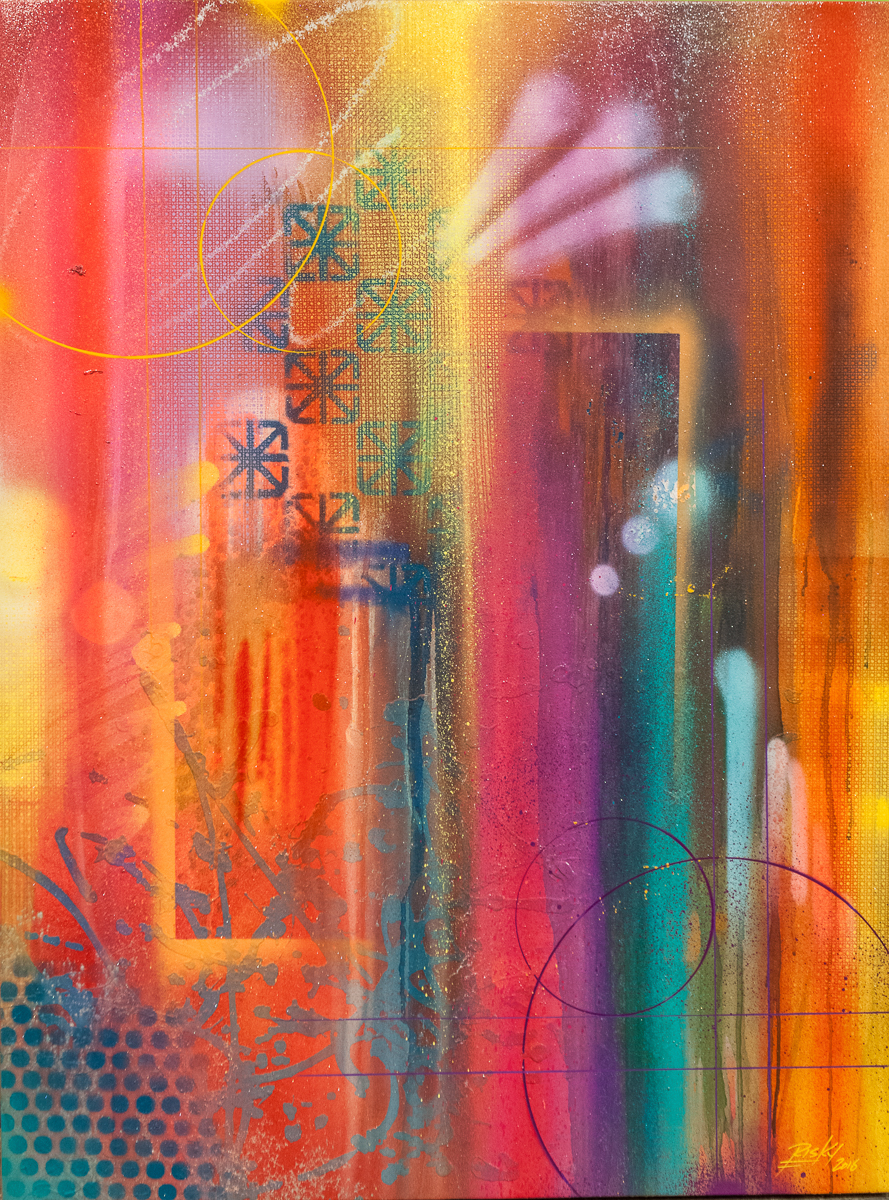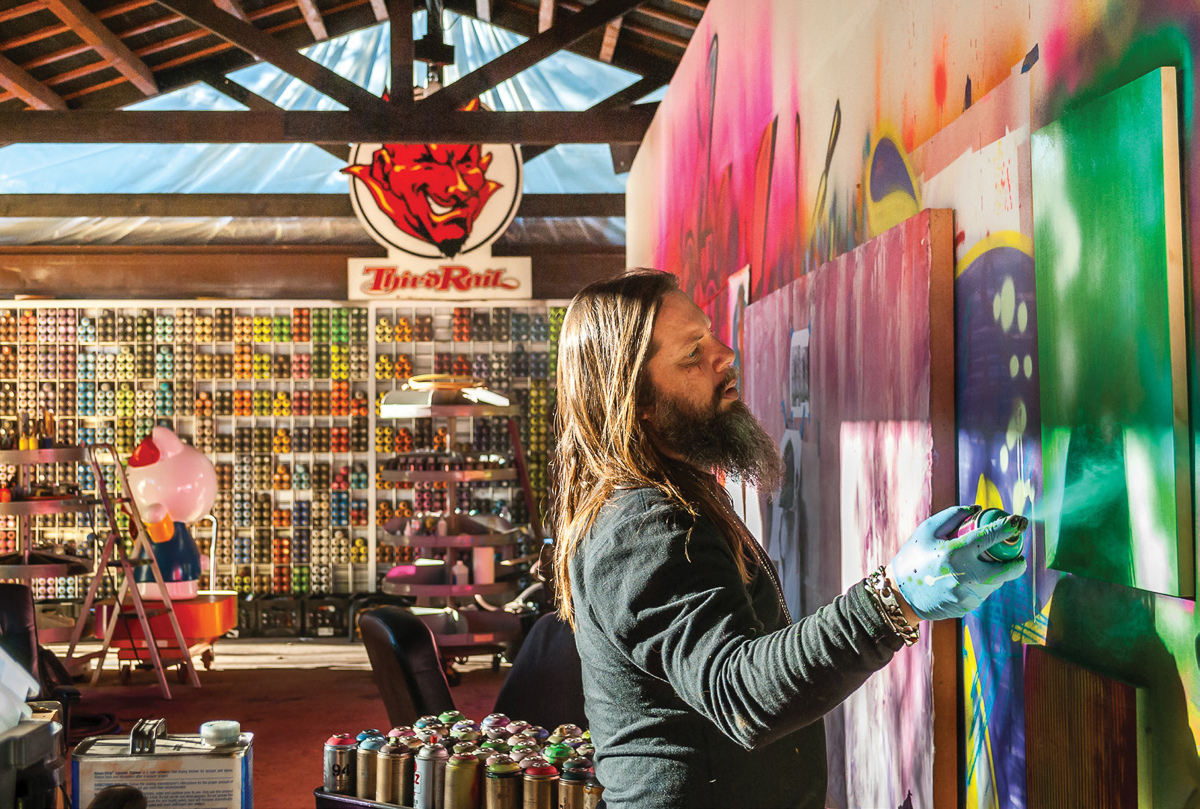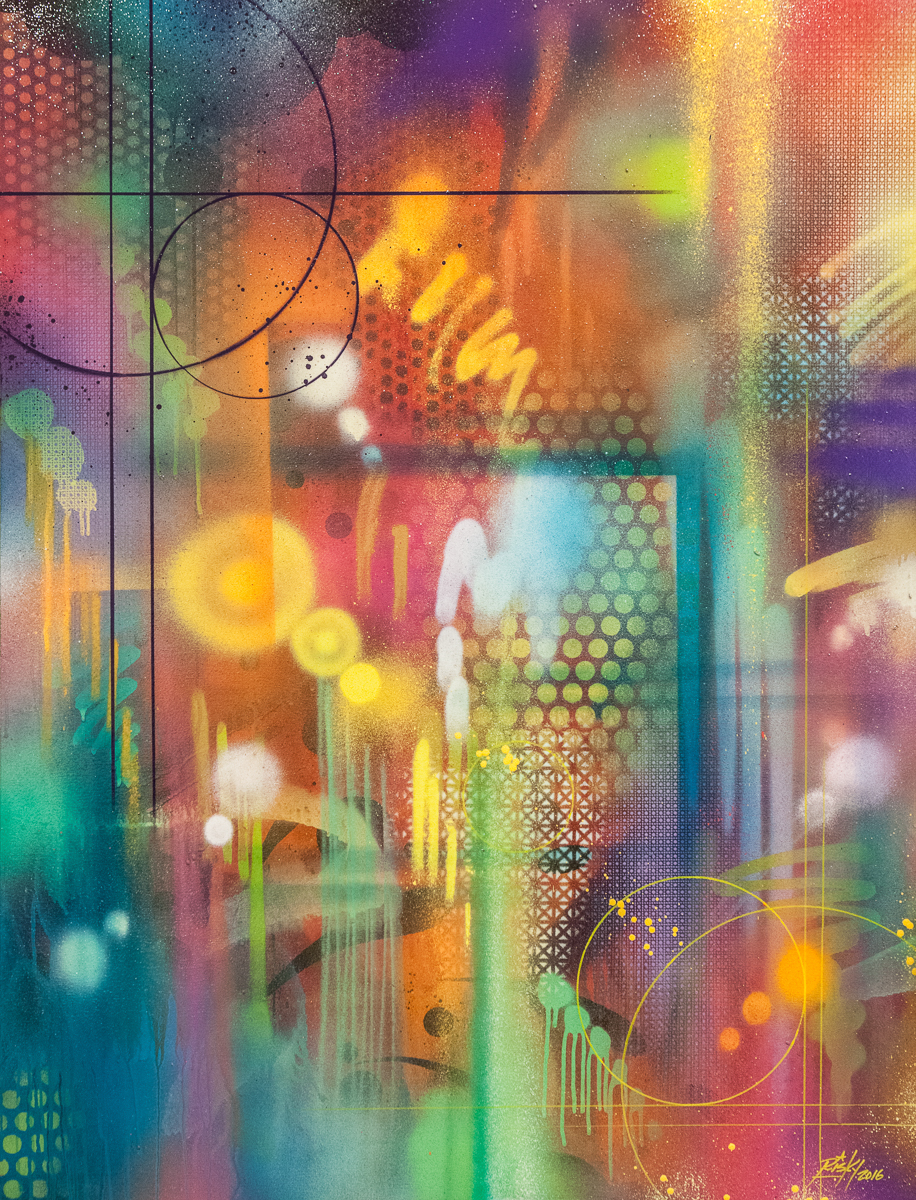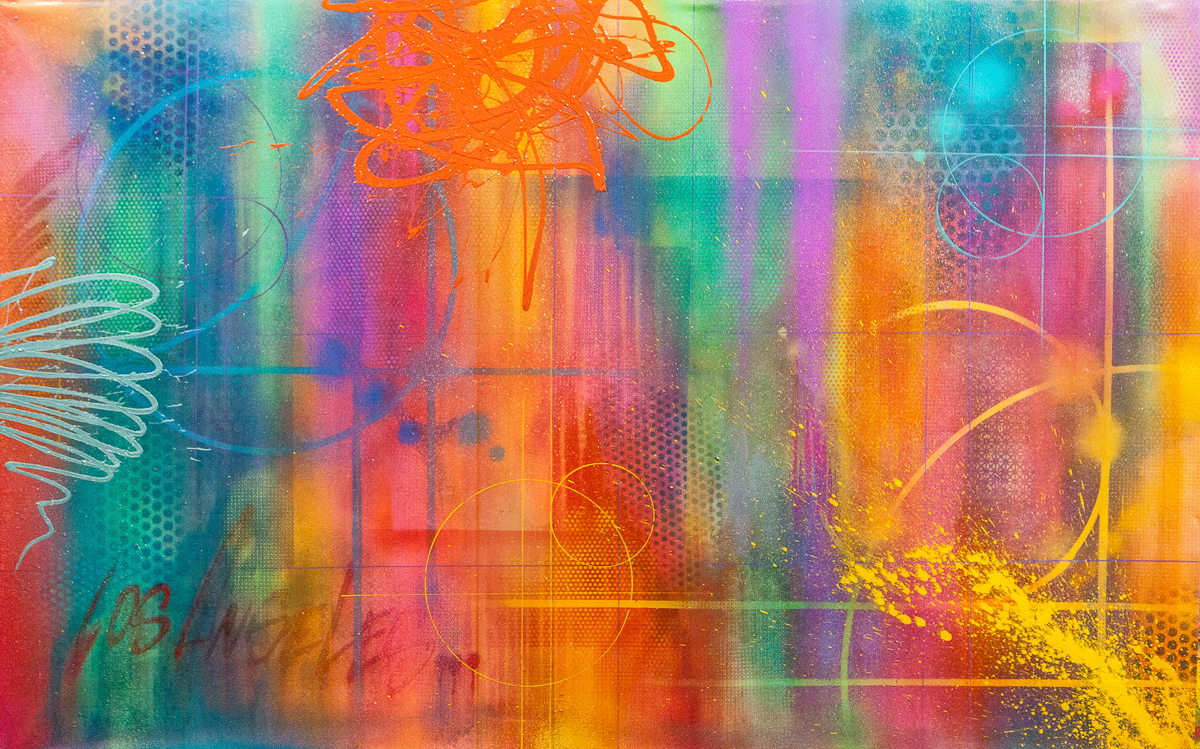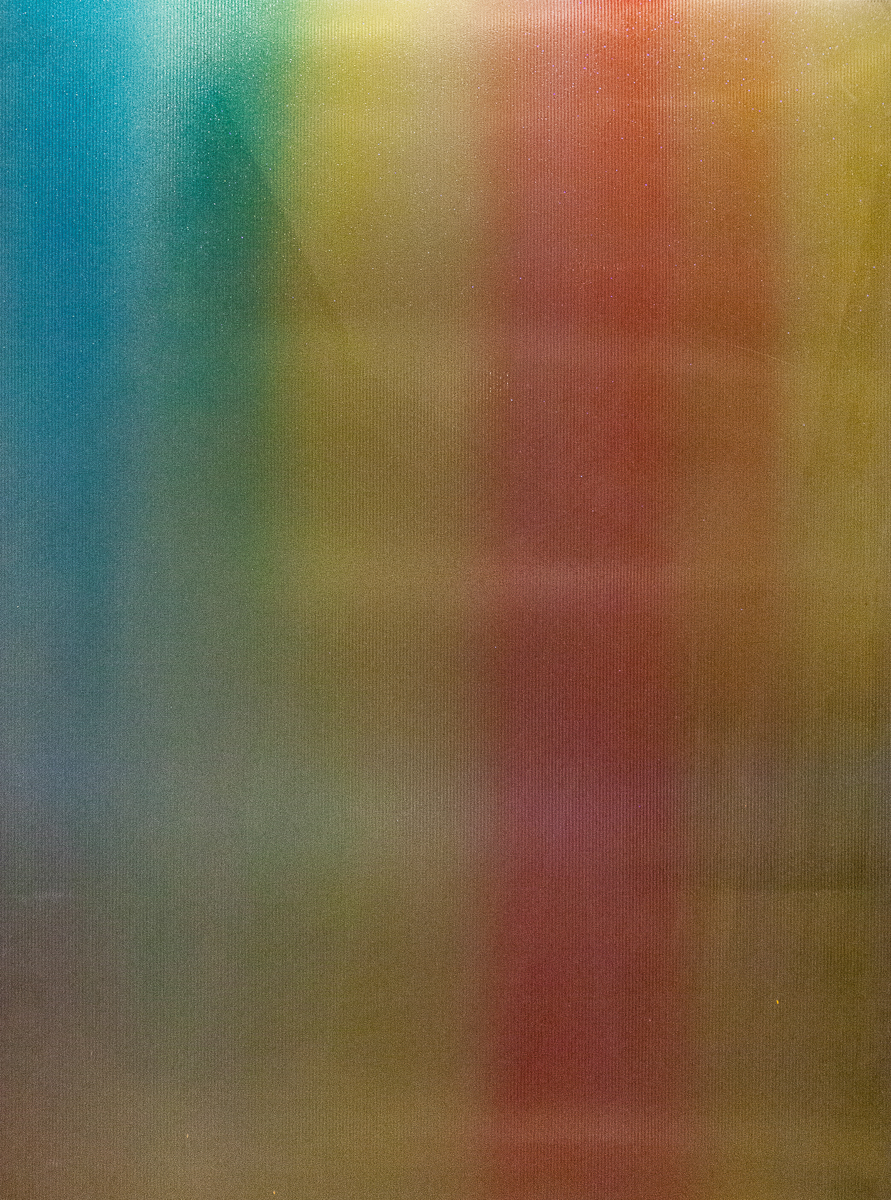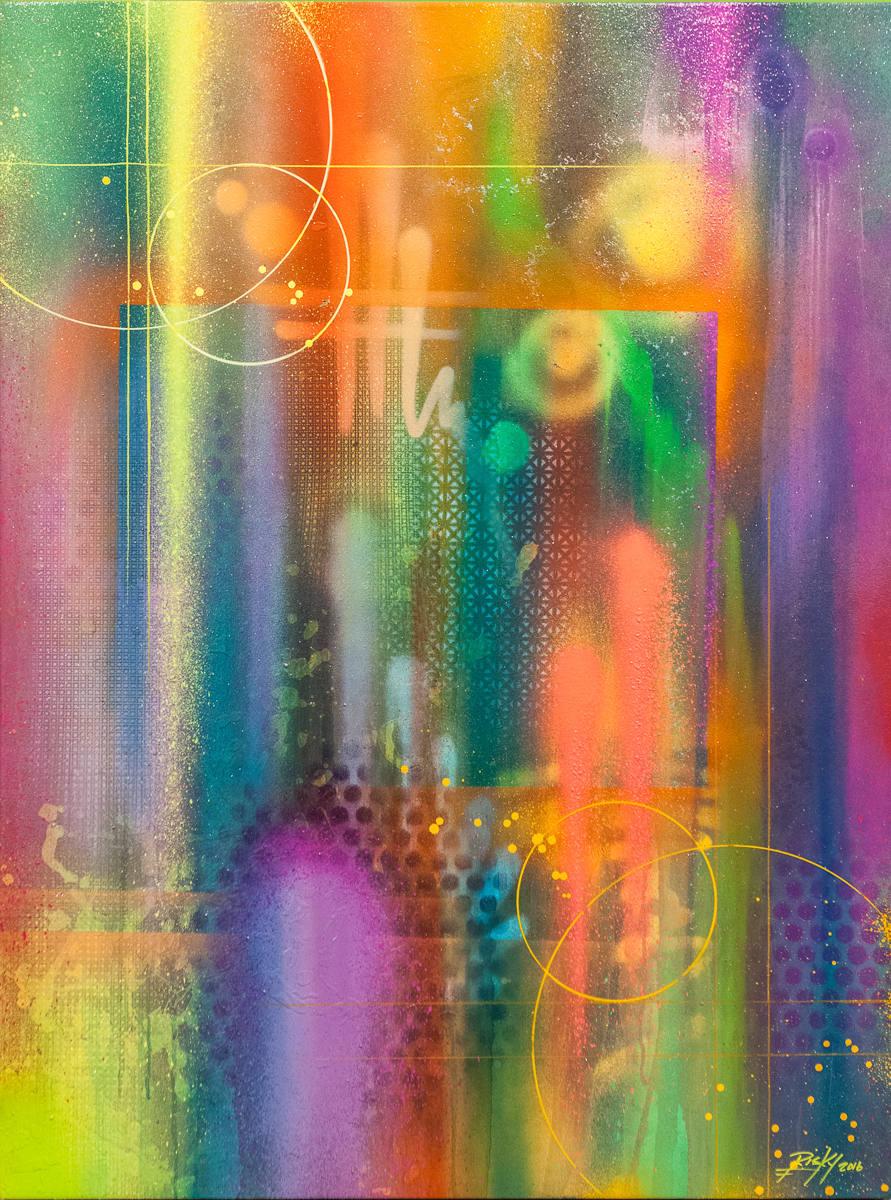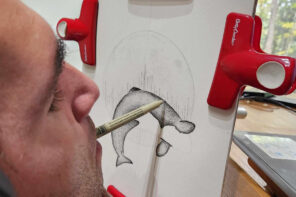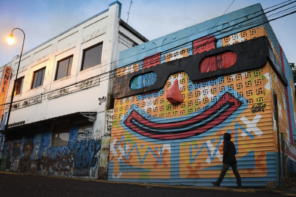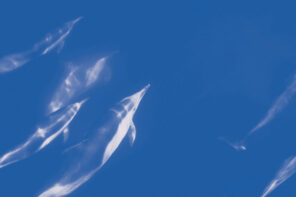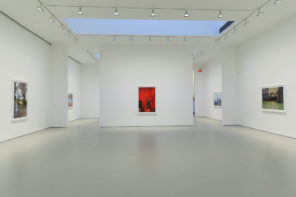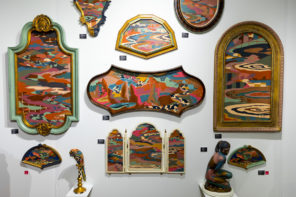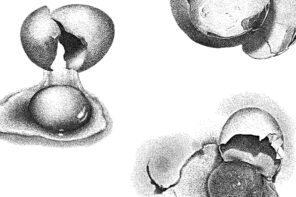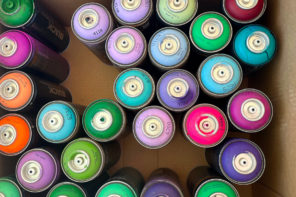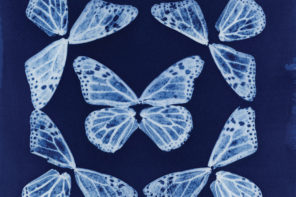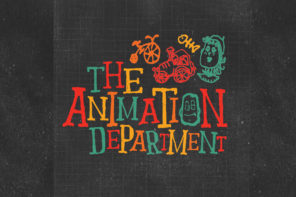RISK at Hero Beach Club August 23–25
Kelly Gravel, the legendary LA street artist known as RISK, is coming to Montauk to eat your lobsters and invite you to come enjoy his art show at The Hero Beach Club. Was a time when Risk coming to the East Coast would have meant he was tagging the last of the remaining bombed subway cars, like some sort of a scene out of a post-modern graffiti-age Misfits, where the last cowboys wrangled the few remaining wild horses.
RISK spent years as an exclusively aerosol artist, and graffiti still informs everything he does, but the bubble-letter-eighties are an echo in new works in paint and sculpture, including a metallic tissue series that takes Damien Hirstian liberties.
In addition to the art on display, RISK will be on hand at an outdoor screening of the doc “Saving Banksy” in which he is featured. It all goes down at Hero Beach Club Thursday, August 23 through Saturday, August 25.
We chatted with RISK about the old days, Michael Jackson, what made NYC graffiti different from LA graffiti, and who makes the best spray paint.
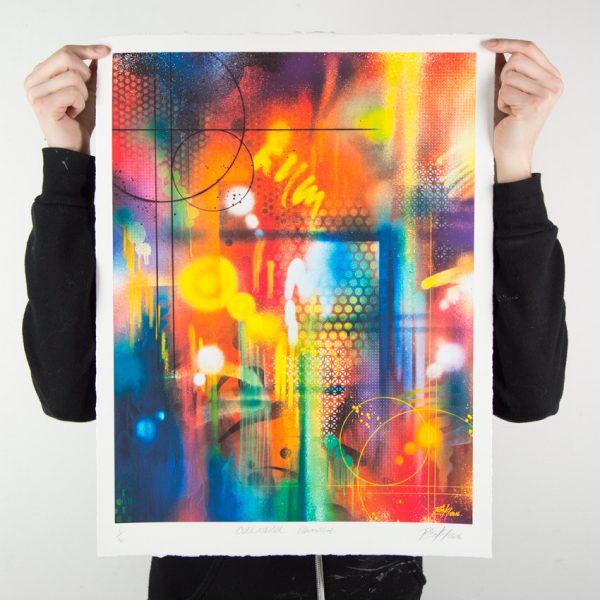
You started out strictly as a street artist and then did more commercial work, including MTV sets and other work for television, music videos and entertainment. Was it all difficult to move back to street art, and did others’ perception of you change in any way?
RISK: No, I was really lucky because when I was doing commercial work I convinced the clients that they really wanted the “real stuff,” meaning they wanted me to write Risk. At that time this was all I was willing to do. I got lot of exposure from this and most of all I would hit them for a ton of paint, so I was getting up even more on streets. It was all the perfect storm for me as a graffiti artist on a mission.
What was the experience of going from the outlaw painting of walls to painting MTV sets like? How did it come about?
RISK: It was easy for me. I would just pull over when I saw film trucks and say, “Hey let me hit that wall. That fake graffiti looks like shit!” Then a few set designers, and directors etc. started calling me. At first, I would do it for free than I started charging. I basically started networking and growing. I ran away and had to pay rent. So it became a necessity.
The locals were fucking with me and they said, ‘Hey, Lee what do you think about Los Angeles graffiti?’
When you first painted in New York in the late ’80s, how did the East Coast artists view Los Angeles artists and how did they receive you?
RISK: They didn’t really dig us. They didn’t understand why we were going so hard on walls. Walls to them were a thing to pass time, the trains were the only thing that mattered. They used the trains as a social commentary. All their commuters rode the trains, so that was the canvas. In Los Angeles we had to paint freeway walls since all of our audience—commuters—drove on freeways.
I slid in at the end of an era. I went to NY in the ’80s to bomb the last of the running subway cars. I was fortunate enough to hook up with a good group of guys. Ghost, Reas, and Ket wound up taking me to paint trains every night. It was awesome. They also brought me to all the iconic graffiti spots. One being Henry Chalfant’s studio. Henry was the primary documenter of graffiti. He did the “Holy Grail” which was subway art and he also worked on the iconic “Style Wars” documentary. When I was at his studio, Lee Quinones walked up and I was in awe. He was like a superhero to me. The locals were fucking with me and they said, “Hey, Lee what do you think about Los Angeles graffiti?” and he replied, “I don’t really know much about it but that guy Risk is killing it. I saw a few of his cars running on the way here.” I had the biggest smile on my face and my head was the size of a basketball! That was the best feeling ever at the time…..
How were the New York and Los Angeles scenes different back then and how have they diverged and influenced each other?
RISK: New York was the mega. They were the originators. Los Angeles broke boundaries and pushed the art form to new heights…
Why was your first tag “Surf” and how did you become Risk?
RISK: I used to surf non stop. it was the only thing that mattered, so it was the first name I thought of.
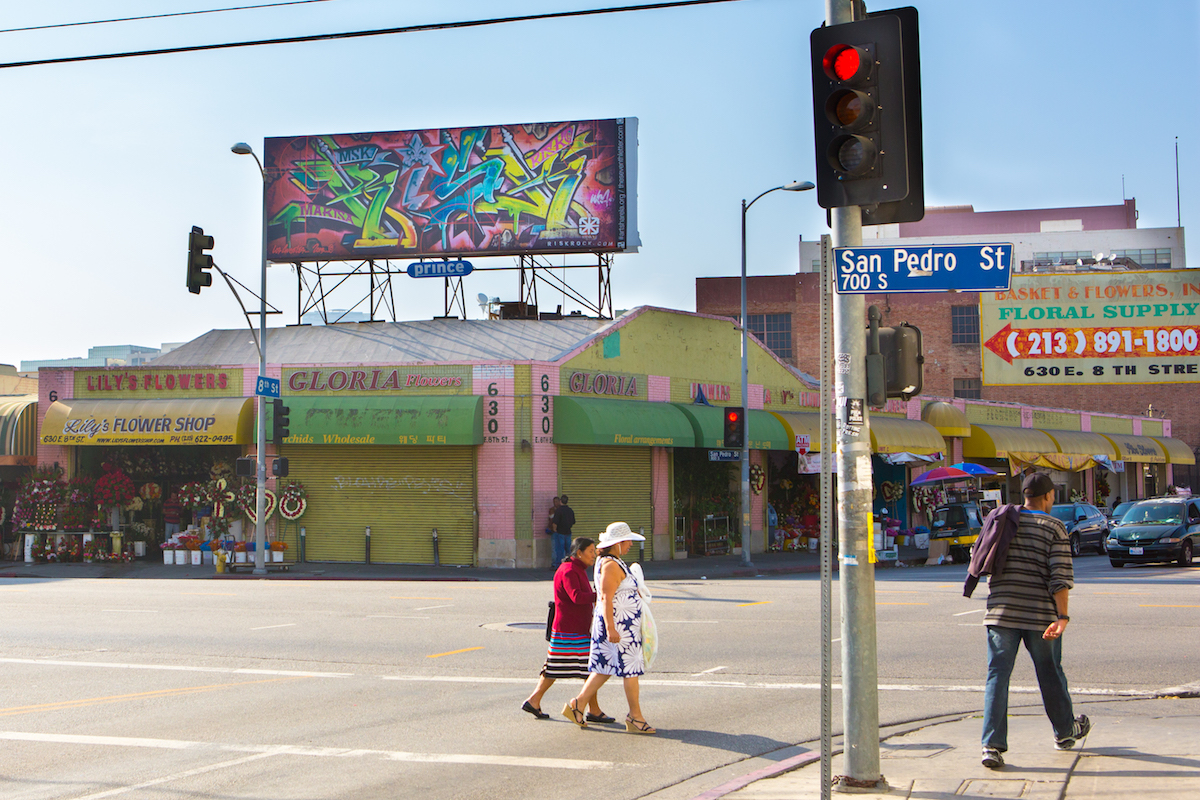
Of all the musicians who have featured your work, or who you’ve collaborated with, which ones mean the most to you?
RISK: I would have to say Joe Perry, Travis Barker, Everlast and Muggs from Cypress Hill. People that I go way back with and communicate with on a regular basis as friends. I have worked with The Doors and Jefferson Airplane Guns n Roses, Michael Jackson, The Chilli Peppers, Suicidal Tendencies, Ice Cube, etc. etc. all people I greatly admire and appreciate working with, however, nothing is better than collaborating with a personal friend.
In a more literal sense, I often use repurposed cans as my canvas.
What spray paint is the best?
RISK: Montana Cans from Germany, because it was made by graffiti writers and designed for painting graffiti. The pressure, valve system and colors are bananas!!!
How does graffiti inform and translate into the work you’ve explored in other mediums?
RISK: I believe graffiti is prevalent in all my work through the color pallet and energy and spirit of a piece. In a more literal sense, I often use repurposed cans as my canvas. I call it metallic tissue, my DNA so to speak. These cans are literally my imprint on society
How did you get involved with Sea Shepherd Conservancy (with that, unfortunately, perfect title “Ocean @ RISK House”)?
RISK: My daughters and I like to participate with the Heal The Bay Foundation. Being surfers from Southern California, we get to see first hand that the ocean needs our help. We have seen an alarming change in the ocean. The pollution and its consequences on sea life. The ocean is our most precious treasure and it needs to be protected.
Graffiti is the last hand-to-surface art form
What’s the biggest change you’ve seen in the art world since you began?
RISK: Well, the biggest change is that graffiti is an actual “art form,” or considered one rather than being unaccepted or dismissed as craft or vandalism. This is real important because graffiti is the last hand-to-surface art form. After this everything became digital. It’s like everything came full circle from cavemen writing on walls to the newest generation spray painting on walls.

“Collateral Damage”
What’s the one thing that has changed about street art that you wish hasn’t?
RISK: Kids used to cherish tradition and the writers before them. They knew the origins and history of graffiti and its pioneers, nowadays kids just look on social media and don’t know anything about what where or why.
Favorite color?
RISK: “Beast.” It’s a cross between hot pink and fluorescent pink
What are you most looking forward to in Montauk?
RISK: The people and seafood…I had such a great time last time I was there. The guys I hung with from The Hero Beach Club were so cool and all the food was amazing! #goodtimes For me art is a social thing. It’s a way of communicating. So having a show among friends is the best environment there can be.

